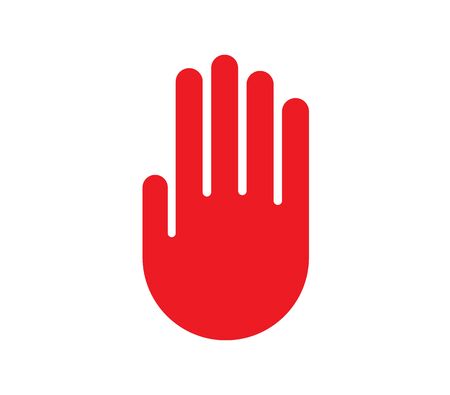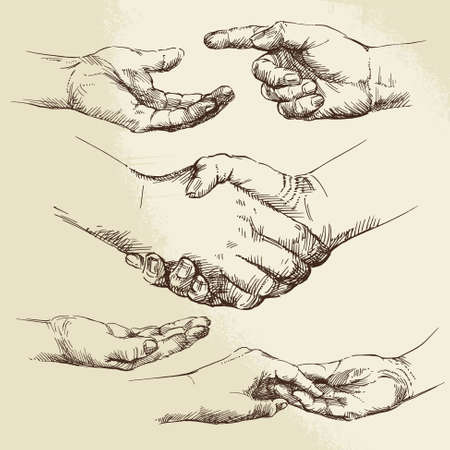1. Understanding the Heart Line in Palmistry
If you’ve ever glanced at your palm and wondered what those lines mean, you’re not alone. In palmistry, the heart line is one of the most talked-about features, especially when it comes to love and emotional wellbeing. Let’s break down what the heart line is all about and why it’s so significant—especially from an American perspective where self-love and emotional health are hot topics.
What Is the Heart Line?
The heart line is typically the uppermost horizontal line on your palm, running from under the pinky finger towards the index or middle finger. Sometimes called the “love line,” it reflects aspects of your emotional life—how you relate to others, how you express affection, and your capacity for self-love.
Common Interpretations of the Heart Line
| Heart Line Shape | General Meaning | What It Might Mean in U.S. Culture |
|---|---|---|
| Long & Curved | Open-hearted, expressive, values connection | Warmth in relationships, prioritizes communication—think openness valued in American friendships and romance |
| Straight & Short | Reserved, practical about emotions | Might focus more on independence or personal space—a big deal in American dating culture |
| Wavy or Broken | Emotional ups and downs, past heartbreaks | Could reflect a journey toward self-love or healing, echoing popular themes of personal growth in U.S. wellness circles |
Why Is the Heart Line Linked to Self-Love?
In modern American culture, there’s a strong emphasis on mental health and self-care. The heart line isn’t just about how you connect with others—it also reveals clues about how you treat yourself. A clear, unbroken heart line can suggest healthy boundaries and positive self-esteem, both of which are celebrated in today’s conversations around self-love.
Quick Reference: Where to Find Your Heart Line
- Start: Usually begins under your pinky (little finger)
- Direction: Runs horizontally across your palm toward your index or middle finger
- Look for: Depth, length, breaks, curves—all tell different stories about your emotional landscape
Understanding your heart line offers a fun way to explore your approach to love and wellbeing—while reflecting some of the values that matter most in American life today.
2. The Connection Between the Heart Line and Self-Love
In American palmistry, the heart line is often seen as a window into your emotional world. It’s not just about romance; this line can also give clues about how you feel about yourself—your level of self-acceptance, your emotional resilience (how well you bounce back from tough times), and your approach to self-care. Let’s break down what certain features of your heart line might reveal, using everyday terms that make sense to U.S. readers.
Understanding the Main Features of the Heart Line
| Feature | What It Means for Self-Love |
|---|---|
| Depth | A deep, clear heart line suggests strong feelings and a solid sense of self-worth. If your line is faint or hard to see, it might mean you’re still working on accepting yourself or expressing emotions. |
| Shape | A gently curved heart line points to someone who’s comfortable sharing their feelings and being open-hearted—even with themselves. A straight line may suggest a more reserved nature, or someone who prefers logic over emotion when it comes to self-care. |
| Length | If your heart line stretches all the way across your palm, it could mean you’re emotionally generous—not just with others, but also with yourself. A shorter line might show a more private approach to feelings and personal care. |
Relating Palmistry Insights to Everyday Life in America
Think of self-love in practical terms: practicing positive self-talk, setting boundaries at work or home, and taking time for things that recharge you—like hiking on the weekends or catching up with friends. If your heart line is strong and bold, you might naturally excel at these habits. If not, it could be a sign to focus more on building self-compassion.
Examples of Heart Line Traits and Self-Care Tips
| Heart Line Trait | Everyday Tip for Americans |
|---|---|
| Deep & Curved | Lean into your strengths by volunteering or joining community groups—you thrive when connecting with others. |
| Straight & Faint | Try journaling or mindfulness apps like Calm or Headspace to build emotional awareness at your own pace. |
| Long & Clear | Balance giving to others with “me-time”—schedule regular self-care days just for you. |
The Takeaway: Your Heart Line as a Self-Love Roadmap
Your heart line isn’t set in stone—it can change as you grow. By understanding its features, you can spot where you already shine in self-love and where there’s room to nurture yourself even more. Whether your style is bold and open or quiet and thoughtful, remember that every American’s path to self-acceptance is unique—and your palm might just offer some helpful hints along the way.

3. Common Heart Line Patterns and What They Mean
Understanding Your Heart Line in the American Context
The heart line is one of the most talked-about features in palmistry, especially when it comes to understanding how we connect with ourselves and others. In the U.S., many people find that their heart lines reflect not just their emotional lives, but also cultural values like independence, openness, and self-care. Let’s look at the most common heart line patterns found in American palms and explore what they say about self-love—and how you can use this insight for personal growth.
Main Heart Line Types
| Heart Line Pattern | What It Means | Self-Love Advice |
|---|---|---|
| Curved Upwards | You are expressive, warm, and open-hearted. Emotions come naturally, and you often wear your heart on your sleeve. | Embrace your natural warmth! Make time for activities that let you express yourself—like art, music, or volunteering. Remember to set boundaries so you don’t give too much of yourself away. |
| Straight Across | You tend to be logical and reserved about emotions. You value stability and may keep feelings private until trust is built. | Practice opening up a little more with trusted friends or through journaling. Allow yourself to feel without judgment—it’s okay to be vulnerable sometimes. |
| Broken or Chained Line | Your heart line has gaps or looks chained (like a series of small links). This can mean emotional ups and downs or past heartbreaks. | Give yourself permission to heal from old wounds. Try mindfulness or therapy to work through emotional blocks. Celebrate small acts of self-kindness each day. |
| Forked End | The heart line splits into two or more branches at the end. This suggests inner conflict between head and heart, or a desire to please everyone. | It’s important to listen to both your feelings and your logic. Practice saying “no” when needed and prioritize your own needs alongside caring for others. |
Tips for Using Heart Line Insights in Everyday Life
- Self-Check-Ins: Take a moment each week to check in with yourself emotionally. Use what you know about your heart line pattern to guide self-care routines.
- Set Boundaries: Whether your line is curved or straight, setting healthy boundaries is key to building lasting self-love.
- Seek Support: If your heart line shows signs of past struggles, reaching out for support from friends, family, or professionals can help you build resilience and confidence.
Your Palm, Your Journey
No matter which heart line pattern you have, remember that self-love is a journey unique to you. Let your palm be a gentle reminder to treat yourself with kindness as you grow and thrive in today’s fast-paced world.
4. Everyday Tips for Growing Self-Love Inspired by Palmistry
Understanding Your Heart Line: A Personal Guide
The heart line on your palm is often seen as a mirror of your emotional well-being and capacity for self-love. In American culture, self-love is linked to confidence, healthy boundaries, and a positive self-image—values that blend seamlessly with insights from palmistry. Here are some practical, everyday ways to nurture self-love, inspired by what your heart line reveals.
Daily Practices That Boost Self-Love
| Palmistry Insight | American Self-Help Approach | Simple Daily Action |
|---|---|---|
| Deep, clear heart line | Gratitude journaling | Write down 3 things you love about yourself each morning |
| Wavy or broken heart line | Affirmations & therapy | Say a positive affirmation in the mirror every day; consider talking to a counselor if you feel stuck |
| Short or faint heart line | Mindfulness & self-care routines | Take five minutes daily for deep breathing or a short walk to reconnect with yourself |
| Long, unbroken heart line | Acts of kindness (for self and others) | Treat yourself to something special once a week, like your favorite coffee or a movie night at home |
Culturally Relevant Ways to Encourage Emotional Health
- Create Your Own Mantra: Americans often use personalized mantras like “I am enough” or “I deserve happiness.” Choose one that resonates with you and say it whenever you need a boost.
- Connect with Community: Join local meetups or online groups focused on wellness. Sharing experiences can help reinforce self-worth.
- Set Healthy Boundaries: Practice saying “no” when you need to protect your time and energy—an essential part of both self-love and emotional health in U.S. culture.
- Celebrate Small Wins: Reward yourself for progress, no matter how small. This could be as simple as treating yourself to your favorite snack after accomplishing a goal.
- Seek Professional Support When Needed: Therapy and coaching are widely accepted in the U.S. as tools for growth. Don’t hesitate to reach out if you want extra guidance on your journey.
Palmistry Meets Modern Self-Care Trends
The heart line can be an entry point into understanding your emotional patterns. Pairing this traditional wisdom with popular American self-care practices—like journaling, mindfulness apps, or participating in wellness challenges—can make personal growth more accessible and effective. Remember, growing self-love is a journey, and these small steps can add up over time.
5. Real-Life Stories: Americans Embracing Self-Love Through Palmistry
Finding Confidence in the Heart Line: Emily’s Story
Emily, a graphic designer from Seattle, always struggled with self-doubt and feeling unworthy of love. After reading about palmistry online, she became curious about her heart line. During a palmistry session at a local fair, the reader pointed out that her deep, clear heart line suggested strong emotional intelligence and capacity for compassion—especially towards herself. Inspired by this reading, Emily started journaling about her strengths and practicing daily affirmations. Over time, she felt more confident and began to treat herself with more kindness.
Healing After Heartbreak: Michael’s Journey
Michael, a teacher from Austin, went through a tough breakup that left him questioning his self-worth. A friend recommended palmistry as a fun way to gain new perspective. Michael learned that his heart line had a gentle upward curve, associated with optimism and resilience in love. This insight encouraged him to focus on self-care activities like hiking and meditation. He credits palmistry with helping him see his breakup as an opportunity for growth instead of failure.
Learning to Accept Imperfections: Jasmine’s Experience
Jasmine, a college student in New York City, often compared herself to others and felt pressure to be perfect. At a wellness workshop, a palm reader noticed some breaks in Jasmine’s heart line and explained these could represent challenges or emotional hurdles—but also personal growth. Jasmine realized she didn’t have to hide her vulnerabilities. She started opening up more to friends and found new confidence in accepting herself as she is.
Summary Table: U.S. Experiences With Palmistry and Self-Love
| Name | Location | Main Challenge | Palmistry Insight | Self-Love Outcome |
|---|---|---|---|---|
| Emily | Seattle, WA | Lack of confidence | Strong heart line = compassion for self | Began daily affirmations; improved self-esteem |
| Michael | Austin, TX | Heartbreak & self-doubt | Upward curve = resilience in love | Pursued self-care; saw growth after breakup |
| Jasmine | New York, NY | Perfectionism & comparison | Breaks in heart line = emotional growth | Became more open; accepted imperfections |
Palmistry as a Tool for Personal Growth in America
These stories show how Americans are using palmistry not just for fun or curiosity but as a meaningful tool to reflect on their emotions and encourage greater self-love. Whether it’s moving past heartbreak, building confidence, or accepting imperfections, the heart line offers insights that help people reconnect with themselves in positive ways.


